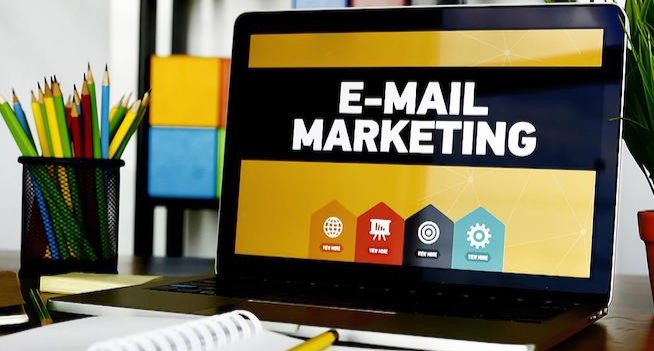The Power of Email Marketing: Driving Engagement and Sales with Automation








The Power of Email Marketing: Driving Engagement and Sales with Automation
The Power of Email Marketing: Driving Engagement and Sales with Automation
In the world of digital marketing, email marketing remains one of the most effective tools for businesses to engage with their audience, nurture leads, and drive sales. Whether you’re a small business or a large enterprise, email marketing automation can transform your customer outreach strategy. This blog will explore how businesses can leverage email marketing to achieve meaningful results.
What is Email Marketing?
Email marketing involves sending targeted messages to a group of recipients via email. It’s used to promote products or services, share updates, and maintain relationships with existing or potential customers. With over 4 billion email users worldwide, businesses have an enormous opportunity to engage their audience directly in their inboxes.
Why Email Marketing Works
- Direct Access to Your Audience: Email allows you to send personalized messages straight to your customer’s inbox, making it a more personal touchpoint than social media or ads.
- High ROI: Email marketing delivers an average return on investment (ROI) of $42 for every $1 spent, making it one of the most cost-effective marketing channels.
- Automation and Segmentation: With the right tools, you can automate email campaigns, segment your audience, and deliver personalized content based on behavior, demographics, or purchase history.
The Role of Automation in Email Marketing
Automation is a game-changer in email marketing. It allows you to set up workflows that automatically send emails based on specific triggers, such as user behavior or time-based actions. Let’s break down how automation can be used to enhance your email marketing strategy:
1. Welcome Emails
When someone subscribes to your email list or signs up for a free trial, a welcome email is crucial to make a great first impression. Automated welcome emails introduce your brand, explain what customers can expect from your emails, and often include a special offer to encourage immediate engagement.
Example: An e-commerce store could send a welcome email with a 10% discount on the first purchase, inviting users to start shopping right away.
2. Drip Campaigns
Drip campaigns are automated sets of emails that nurture leads over time. These emails are sent based on a schedule or triggered by user actions, such as downloading a resource or signing up for a webinar. By providing value gradually, drip campaigns build trust and guide the lead through the sales funnel.
Example: A SaaS company can create a drip campaign for free trial users, sending a series of emails that highlight key features, customer success stories, and tips on how to get the most out of the software.
3. Behavior-Triggered Emails
Behavior-triggered emails are sent based on specific actions taken by the user, such as browsing a product page, abandoning a cart, or visiting the pricing page. These emails are highly relevant and timely, which increases their effectiveness.
Example: If a customer adds products to their shopping cart but doesn’t complete the purchase, you can send an abandoned cart email offering a small discount to encourage them to complete the transaction.
4. Post-Purchase Emails
After a customer makes a purchase, automated emails can help reinforce their decision, encourage repeat purchases, and foster brand loyalty. This can include order confirmations, shipping updates, or follow-up emails requesting reviews or feedback.
Example: An online store can send a follow-up email asking the customer to review their recent purchase, or offering a discount on a future order.
Best Practices for Effective Email Marketing
To get the most out of your email marketing efforts, follow these best practices:
- Segment Your Audience: Not all your subscribers are the same, so why send them the same emails? Use segmentation to divide your audience based on interests, behaviors, or demographics, and tailor your messages accordingly.
- Personalize Your Emails: Personalization goes beyond just including the recipient’s name. Use dynamic content to recommend products, address pain points, or acknowledge past behavior to create a more personalized experience.
- Optimize for Mobile: Nearly 50% of all emails are opened on mobile devices, so make sure your emails are mobile-friendly with responsive designs, short copy, and clear call-to-action buttons.
- A/B Test Your Campaigns: To continually improve your email marketing, A/B test different elements of your campaigns, such as subject lines, content, and sending times. This will help you understand what resonates best with your audience.
- Monitor and Analyze Metrics: Use analytics to track key metrics like open rates, click-through rates, and conversions. Regular analysis of these metrics will help you optimize future campaigns.
Conclusion: Driving Sales with Email Marketing
Email marketing is a powerful tool for businesses to engage with their customers and drive sales. Through automation, personalization, and strategic messaging, you can nurture leads through the sales funnel and convert them into loyal customers. Whether you’re running welcome series, drip campaigns, or behavior-triggered emails, automation allows you to efficiently manage and optimize your marketing efforts for maximum impact.
Ready to Leverage Email Marketing Automation?
If you’re looking to boost engagement, nurture leads, and drive sales through email marketing, it’s time to implement a solid automation strategy. With the right approach, email can become your most powerful marketing channel, delivering personalized experiences that convert.
Hashtags:
#EmailMarketing #MarketingAutomation #LeadNurturing #DripCampaigns #EmailStrategy #EmailMarketingTips #CustomerEngagement #DigitalMarketing #EmailROI

